The Forsythia genus contains 11 species best known for putting on a spectacular display of bright yellow blossoms in early spring, when many other plants have yet to awaken from their winter dormancy.
For instructions on how to cultivate this easy-to-grow, vigorous, woody shrub in your garden, be sure to consult our guide to growing forsythia.
In this article, we discuss seven common reasons why plants may fail to bloom, and how you can avoid them.
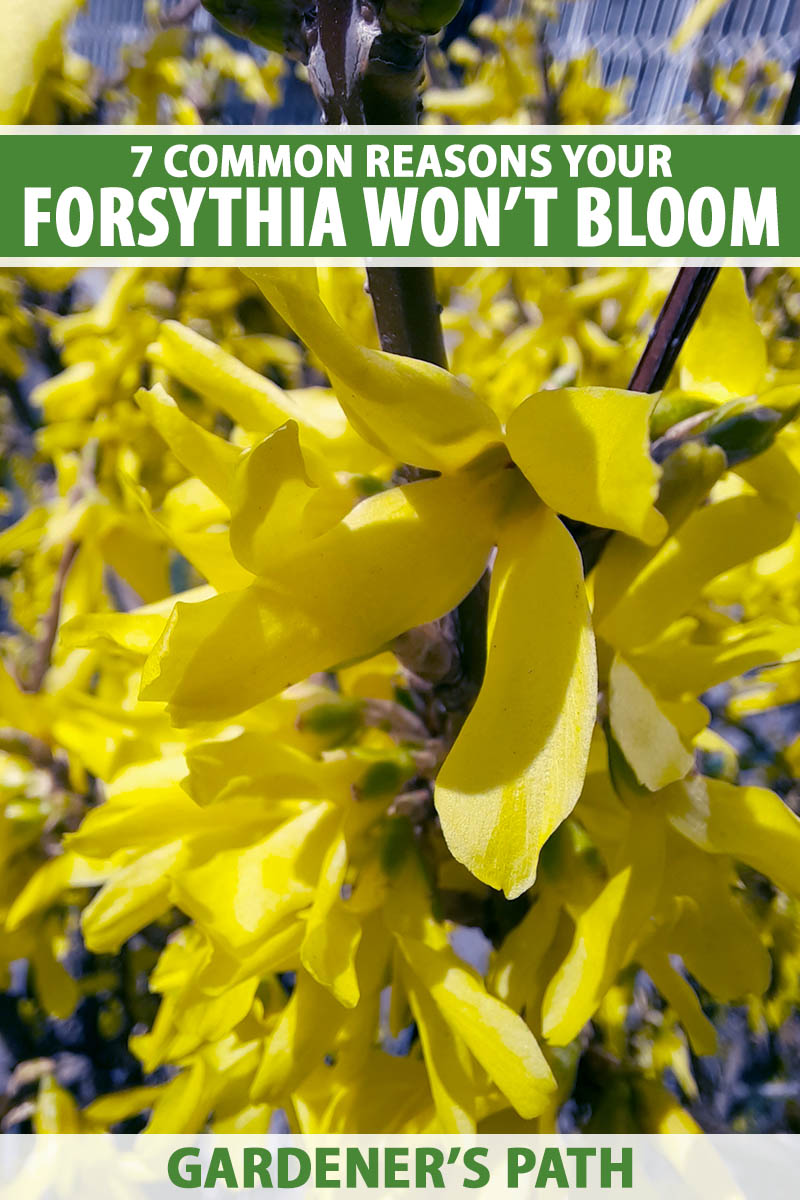
Here’s the lineup:
7 Reasons Why Forsythia May Not Bloom
Let’s dive right in!
If your forsythia didn’t burst into cheery yellow blossoms this spring, there are seven possible reasons for the disappointment.
It could be that the crown is buried, the plant has excess nitrogen, or perhaps it was hit with a late freeze, or you pruned it too late in the season. Additionally, the plant may just be old or planted in a location that’s too shady for it to flower.
Let’s look at each of these reasons and how you may avoid them.
1. Buried Crown
The crown is the portion of a shrub where the roots join the stems. In ideal conditions, it should be an inch above ground level.
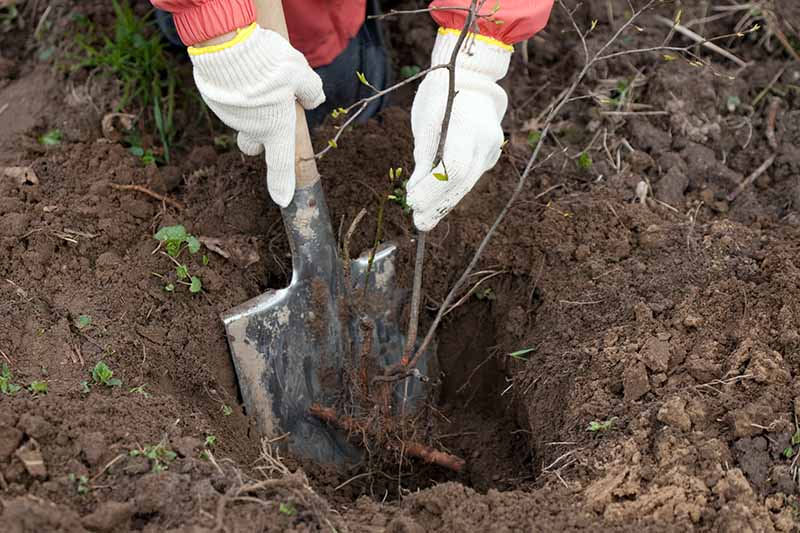
Burying the crown beneath the soil, or under a thick layer of mulch, may adversely affect the growth of the roots, depriving the stems and leaves of nourishment, and possibly causing a failure to set buds.
Be sure to avoid planting too deeply, and if you apply mulch always leave one or two inches of space around the crown for best results.
2. Excess Nitrogen
An excess of nitrogen in the soil may cause a great deal of foliage to grow with few or no flowers. If it’s all leaves and no blossoms, this could be the problem.
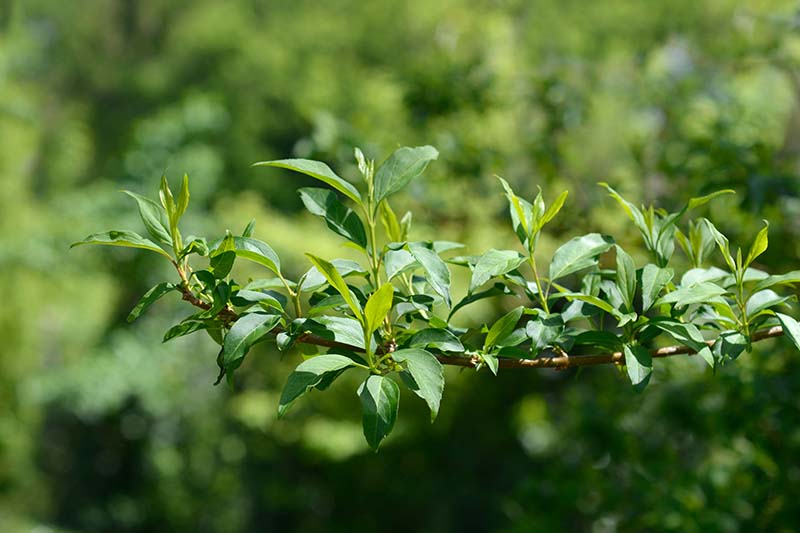
If you fertilize your bushes, be sure to choose a well-balanced, slow-release product, such as 10-10-10 (NPK) to avoid exposing them to too much nitrogen.
Mature shrubs typically thrive without any fertilizer if they are planted in organically-rich soil.
In addition, be aware that nitrogen-rich lawn foods may affect bushes grown in close proximity.
3. Improper Pruning
Two unique characteristics of forsythia are that it blooms on old wood, and begins to set next year’s buds soon after flowering.
Therefore, all pruning must be done as soon as possible after flowering, or you’ll have no buds the following spring.

If you were to prune in the fall, for example, you would cut off the developing buds. They won’t grow back, and you’ll have fewer blossoms come through in spring.
It’s tricky to prune forsythia just after blooming, because the leaves come out with gusto even before the last of the flowers have dropped.
However, if you wish to prune, you must see past the leaves to the structure you desire, and prune up to one-third of the shrub every two to three years to maintain vigor.
Once you see buds forming on the stems, the window of opportunity for pruning this year has passed.
It’s also important to prune some of the older canes right down to the ground – not just the ends of the branches. This allows new canes to emerge and encourages more vigorous blooming.
You can learn more about how to prune forsythia in our guide.
4. Late Freeze
If the temperature takes a dive just as the buds are opening or while they are developing, you may find that they freeze in place and never open.
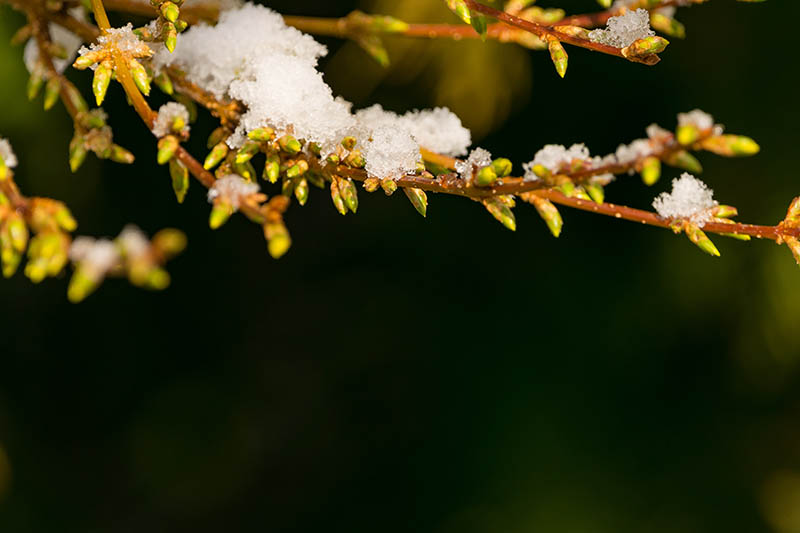
An unusually cold winter can also take a toll on a shrub’s ability to flower, and branches may die off or suffer frost damage.
You can inhibit the effects of excessive chilling and freezing by wrapping smaller shrubs in burlap when extremely low temperatures are in the forecast.
In addition, if you water shrubs occasionally during the winter, when the weather is dry and the ground isn’t frozen, they may be better equipped to handle a sudden deep freeze. Believe it or not, plants with water inside them are less likely to suffer freeze damage than those that are very dry.
Read more about caring for cold damaged forsythia plants here.
5. Old Plant
Shrubs that reach mature dimensions with infrequent pruning are likely to have a lot of old wood that no longer bears flowers, because they are slowing down in their old age.

You can rejuvenate old plants with a deep pruning. Remove about one third of the plant by cutting old canes to the ground. Be sure to open up dense middles so that the shrub receives sunshine all the way to the ground.
In a couple of years, you should have an abundance of fresh canes and blossoms.
6. Premature Bloom
Sometimes the weather plays tricks on us, with a false spring or Indian summer. This can also fool the shrubs into thinking it’s time to bloom.
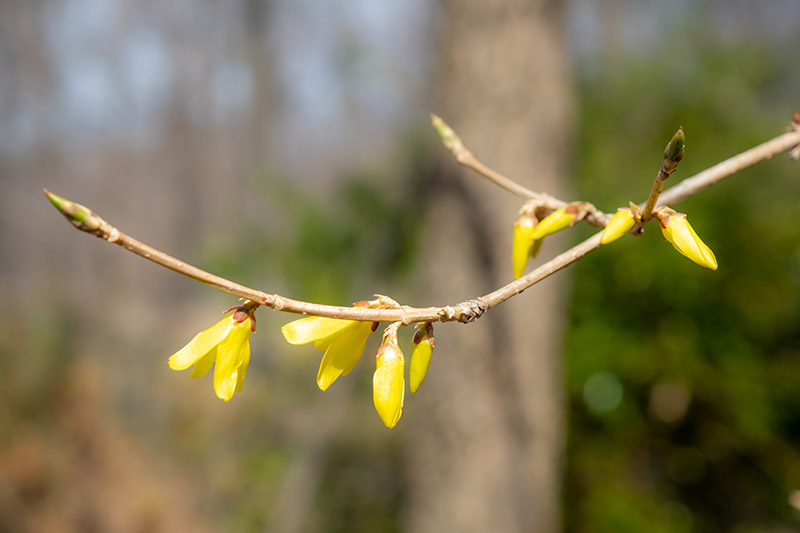
I’ve had forsythia bloom sparsely in the fall, and then sparsely again the following spring. Off-season blooming may even result in no spring bloom, if enough buds have a chance to open in the unseasonable warmth.
This is one cause without remedy, but it doesn’t mean there’s anything wrong with your plant.
7. Too Shady
Ideally, forsythia thrives in a full-sun location. If it’s planted in a shady spot, this may be the cause of few or no flowers appearing in spring.
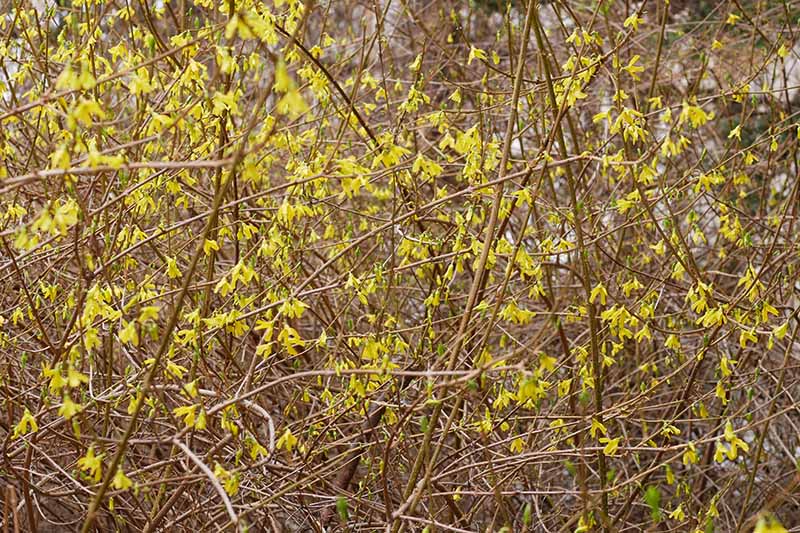
If you have a plant that isn’t getting at least six hours of sunlight a day, consider moving it.
If this is not feasible, evaluate nearby trees and shrubs to see if they may be pruned to allow more light to reach your forsythia.
And remember the importance of sunlight for future plantings!
Blooms You Can Count On
Knowing these seven reasons why you forsythia may not bloom takes the mystery out of the occasional disappointment and enables you to be proactive in most cases.
With the exception of premature blooming which you can’t control, there are ways to avoid the other causes and foster the growth of thriving bushes flush with bright yellow blossoms that bid a cheery goodbye to winter.
Have you had forsythia bushes fail to bloom? Tell us about your experience in the comments section below.
And for more information about growing shrubs in your garden, check out these guides next:
- 7 Tips for Growing Formal or Informal Forsythia Hedges
- The 5 Best Shrubs for Hedges High and Low
- 11 of the Best Forsythia Varieties for Glorious Spring Color
- 5 Common Causes of Forsythia Yellowing
© Ask the Experts, LLC. ALL RIGHTS RESERVED. See our TOS for more details. Uncredited photos: Shutterstock.
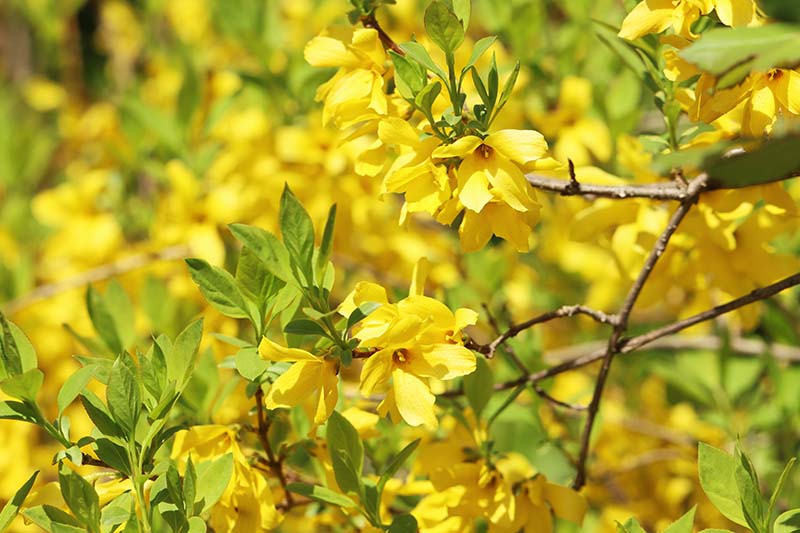
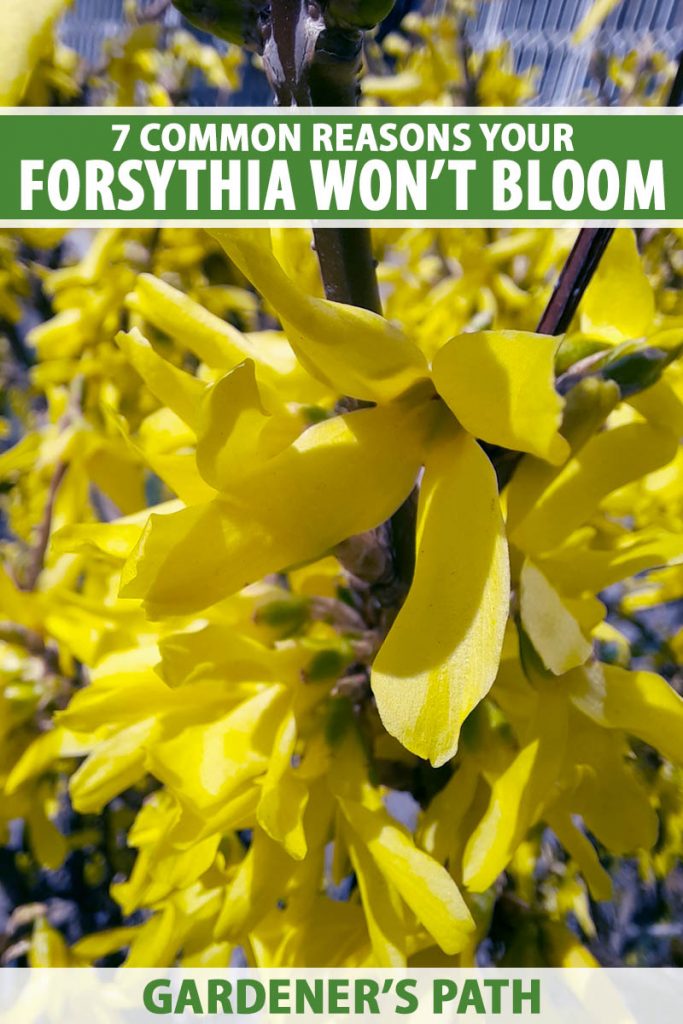

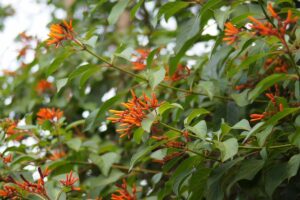
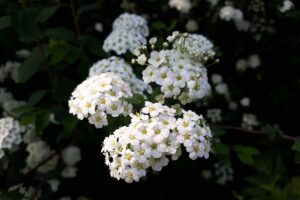
Thank you for all your help. I have a forsythia shrub that is less than five years old and the last two years in the spring there are lots of buds but it doesn’t bloom. Then after there is lots of green foliage. The shrub is planted on the south side of the lot behind the house about 20 feet away and gets sun from about 12 noon for three/four hours then filtered sun after that.
Any thoughts would be appreciated.
Pat
Hi Pat –
Thank you for reading. Forsythia does best with full sun, 6 hours per day. However, it generally tolerates part shade. It sounds like your buds have suffered “winter kill.” Buds are in place all winter, and they are not as cold hardy as the branches of a shrub. In an especially harsh winter, or in the event of a a spring cold snap, the buds may die. You can try making a shelter with burlap, twine, and stakes for your shrub next winter, for added warmth.
What is wrong with my forsythia?
Hello Bill –
Your shrub is not a forsythia. It appears to be a wax leaf privet, Ligustrum japonicum. The white coating and desiccated foliage suggest powdery mildew. I recommend contacting your local agricultural extension for a definitive analysis.
We planted a small forsythia bush In the Spring of this year. It was all bare branches and slowly it got leaves and now it’s about 2′ tall And about 2 and a 1/2 feet across except for one branch that sticks out approximately 3′ on its own! My question is do we prune this newer plant down to the ground or do we just leave it alone since it is a smaller plant that we just planted this Spring?
Hi Michelle –
Congratulations on your new forsythia! It’s always exciting to see the first flush of growth. It’s too late to prune this year without sacrificing next year’s buds and risking the stimulation of new growth when the shrub should be hardening off for the winter.
Instead, do a little pruning of damaged or crossed branches next spring, just after the flowers finish blooming. Save the deep pruning for shrubs that are in distress, unless you have space issues, because it can cause shock, and is usually reserved for overgrown or sick bushes that are producing few flowers.
My 2 Forsythia viridissima ‘Bronxensis’ planted 2 seasons ago have yet to bloom in the spring. They receive ample sun, enjoy good soil, but have yet to produce spring flowers. We’re zone 5, NW PA, close to Lake Erie. Any thoughts as to why?
Hello Paul –
It’s possible that the soil is too rich. When there is too much nitrogen there is a lot of foliage at the expense of flowers. Don’t fertilize, and avoid having lawn clippings and lawn fertilizer in the forsythia soil. Nitrogen is changeable and hard to measure with a soil test, but you may want to consult your local agricultural extension about doing one.
Also, if you are pruning too late in the season, you may be inadvertently cutting off next year’s buds. Forsythia blooms on old wood, so pruning is best done right after blooming.
Our forsythias in northern Virginia have bloomed reliably. But, winter of 2021-22 has had lots of warm weather and some of the shrubs still have green leaves in late December! I’m not sure what to do. Will this stop blooming in spring? Thank you for your advice.
Hello Thomas –
Forsythia blooms on old wood. The buds for next spring are fully formed by the fall. When the weather is unusually warm, it is possible for them to open in the fall or winter. Premature blooming may result in a less showy spring display. If your shrubs haven’t undergone a premature bloom, there should be abundant flowers in the spring.
I have a forsythia shrub and a friend of mine planted it for me and noticed that it only had a small root left and the top of it would just break off I don’t know what to do keep it planted or replace it
Hello Amy –
Forsythia are pretty sturdy shrubs. Water it once a week if it doesn’t rain, and watch for signs of life. It may surprise you.
I planted this forsythia a few years ago and didn’t trim it the first year. Very few blooms. Trimmed it slightly last year but I am still not getting very many blooms. You can see I have a bunch of blooms on the base and then just a few scattered throughout. I’m in zone 5, suburbs of Chicago, and it’s planted in full sun, outside edge of my patio. I am going to trim the oldest branches to the ground this year. I am still puzzled why it’s not blooming though.
Hi Todd, I have attached your photo here, Nan will be along shortly to help you out.
Hi Todd – Your forsythia is exhibiting signs of poor winter hardiness. Although it may be a cultivar suited to zone 5, the buds can still freeze when temperatures dip below -5°F or there is a late-season freeze. Unfortunately, even one of the hardiest hybrid cultivars, Forsythia x ‘Meadowlark’, which is suited to zones 5 to 8, is not immune to bud freezing. You can prune deeply post-bloom, taking care not to remove more than one-third of the total volume of the shrub. In the fall, you can wrap the shrub in burlap for winter insulation. I refer you to… Read more »
Thank you! I’ll give that a try!
We have had a forsythia for many years. It bloomed beautifully last year, but this year we got only a very few blooms and it has already leafed out. We live in NH and had a pretty cold winter this year. Our spring has also been cold and wet. We have just started getting warm weather on May 6.
Same exact thing happened to me. Would love to see what the answer is……
Hi Anne and Frances –
While a forsythia shrub may be zone hardy, the buds can freeze and die during exceptionally cold weather, especially if it is prolonged.
The leafing out is evidence of the shrub’s ability to tolerate a winter that the buds could not withstand.
Fellow reader Todd, above, had a similar experience. Please see my comments for pruning and wrapping for a better outcome next year.